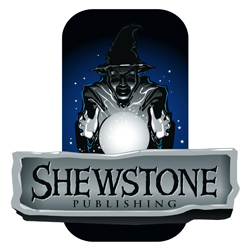As a preview of our upcoming Magonomia supplement, 101 Adventure Frames in Enchanted England, here’s the completed text of one of the 101 frames: “Angel of Stone” by Jaclyn Lewis.
About Adventure Frames
Many game masters don't play published adventures as written, but rather use them as a source of ideas for their homebrew games. An adventure frame is just the essential plot structure for a one-session adventure—the part people are most likely to use. It's the spark to set your imagination running. Details of specific scenes, characters, and challenges can be filled in as the game master wishes. An experienced game master should be able develop an adventure frame into a customized story in about thirty to sixty minutes.
Shewstone Publishing's adventure frames are presented in "hook, line, and sinker" format, originally developed by Jolly Blackburn in Shadis magazine in the 1990s. The hook is the opening scene or scenes that motivate the player characters to participate in the adventure. The line is the set of fun events and challenges that make the adventure worth playing. The sinker is a surprise, usually a plot twist, that makes the adventure unique and memorable. The sinker can often be omitted if you want the plot to be more straightforward. Finally, preparation notes give you an idea of what homework the game master should do to get ready to run the adventure.
Angel of Stone
by Jaclyn Lewis
Summary: Protect Hampshire from a vengeful tomb effigy.
Content Warnings: Death of a child, Death by decapitation
Genre: Mystery
Place: A prosperous parish, such as Elvetham in Hampshire
Time Period: Any era
Length: Medium (2-4 hours)
Hook: Well-to-do gentleman Edward Havishire summons the wizards to aid him with a problem. The children of his peers have become increasingly dismissive of their duties, instead chasing rumors of an Angel of Stone that has been sighted prowling various estates by night, and is said to rush toward sinners with blinding speed. Edward is particularly nervous for the young people’s well-being, as many of the teens were friends with his late daughter, Rebecca.
Line: The “Angel'' in question is Rebecca’s tomb effigy. During the day, the effigy rests in the cemetery by the parish church, but at night, it wanders about as a tomb warden, searching for Rebecca's friends from life. The wizards must track the source of the “Angel” to the church, perhaps get past other overprotective tomb wardens in the cemetery, and determine, through magical or conversational means, that Rebecca’s necklace has been stolen, provoking her tomb warden's ire during her nightly excursions.
Sinker: When Thomas Chester’s son Frances goes missing, the wizards find his body near the grounds of the parish hall . . . and his head several yards away, struck by a stone sword. The wizards must locate the necklace, which he had stolen and given to his paramour, Agnes, before Rebecca strikes again.
Preparation Notes: Create an encounter, combat or otherwise, with a tomb warden (use the statistics for a Tomb Warden from A Bestiary of Enchanted England, page 134, or create your own). Choose a pretext for how Rebecca's tomb warden obtains a sword: either her tomb effigy includes a sword contrary to expected gender roles, or the tomb warden takes a sword from the effigy of a nearby male relative. Develop ways for players to discover the truth of the stolen necklace, and, if desired, craft personalities and social dynamics for Frances, Rebecca, Agnes and the other young people of Hampshire.
Keywords: Theft, teenagers, cemetery, murder, tomb warden
Tomb Wardens
From medieval times and into the Tudor era, wealthy or prominent people were buried above ground in large, hollow stone blocks that enclose the coffin. These tombs are as likely to be found in churches as in mausoleums. The top of the tomb is usually carved into a tomb effigy, which is a life-sized statue of the deceased lying as if asleep. Tomb effigies are made of unpainted stone (often marble) and, for mens' tombs, usually include a carved sword and perhaps armor.
Legends speak of tomb effigies coming to life to defend the church or mausoleum from thieves. In Magonomia, such animated effigies are called tomb wardens. They're possessed by some kind of spirit but theologians of Enchanted England doubt that it's the ghost of the dead person. It's thought more likely to be some kind of minor angel—or devil—that comes without being summoned by any mortal. Being made of stone, tomb wardens move with a ponderous gait but have a magical ability to move quickly when no one is looking at them directly. They use this tactic to cut off thieves from escaping before they attack. Tomb wardens are merciless, known for decapitating their victims with their stone swords. The best hope to survive a tomb warden's attack is to drop any ill-gotten treasures and run for your life.
Additional lore and adventure ideas for tomb wardens can be found in A Bestiary of Enchanted England.
About the Book: 101 Adventure Frames in Enchanted England





